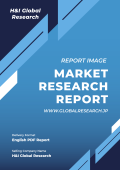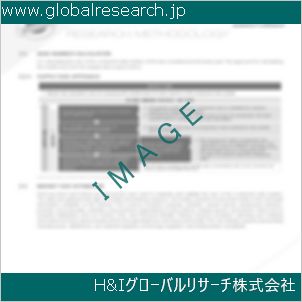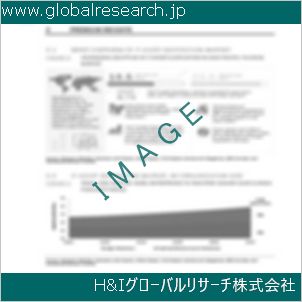Table of Contents
1 Industry Overview of Propyne
1.1 Definition and Specifications of Propyne
1.1.1 Definition of Propyne
1.1.2 Specifications of Propyne
1.2 Classification of Propyne
1.3 Applications of Propyne
1.3.1 Nuclear Application
1.3.2 Non-Nuclear Application
1.4 Industry Chain Structure of Propyne
1.5 Industry Overview and Major Regions Status of Propyne
1.5.1 Industry Overview of Propyne
1.5.2 Global Major Regions Status of Propyne
1.6 Industry Policy Analysis of Propyne
1.7 Industry News Analysis of Propyne
2 Manufacturing Cost Structure Analysis of Propyne
2.1 Raw Material Suppliers and Price Analysis of Propyne
2.2 Equipment Suppliers and Price Analysis of Propyne
2.3 Labor Cost Analysis of Propyne
2.4 Other Costs Analysis of Propyne
2.5 Manufacturing Cost Structure Analysis of Propyne
2.6 Manufacturing Process Analysis of Propyne
3 Technical Data and Manufacturing Plants Analysis of Propyne
3.1 Capacity and Commercial Production Date of Global Propyne Major Manufacturers in 2023
3.2 Manufacturing Plants Distribution of Global Propyne Major Manufacturers in 2023
3.3 R&D Status and Technology Source of Global Propyne Major Manufacturers in 2023
3.4 Raw Materials Sources Analysis of Global Propyne Major Manufacturers in 2023
4 Capacity, Production and Revenue Analysis of Propyne by Regions, Types and Manufacturers
4.1 Global Capacity, Production and Revenue of Propyne by Regions 2019-2024
4.2 Global and Major Regions Capacity, Production, Revenue and Growth Rate of Propyne 2019-2024
4.3 Global Capacity, Production and Revenue of Propyne by Types 2019-2024
4.4 Global Capacity, Production and Revenue of Propyne by Manufacturers 2019-2024
5 Price, Cost, Gross and Gross Margin Analysis of Propyne by Regions, Types and Manufacturers
5.1 Price, Cost, Gross and Gross Margin Analysis of Propyne by Regions 2019-2024
5.2 Price, Cost, Gross and Gross Margin Analysis of Propyne by Types 2019-2024
5.3 Price, Cost, Gross and Gross Margin Analysis of Propyne by Manufacturers 2019-2024
6 Consumption Volume, Consumption Value and Sale Price Analysis of Propyne by Regions, Types and Applications
6.1 Global Consumption Volume and Consumption Value of Propyne by Regions 2019-2024
6.2 Global and Major Regions Consumption Volume, Consumption Value and Growth Rate of Propyne 2019-2024
6.3 Global Consumption Volume and Consumption Value of Propyne by Types 2019-2024
6.4 Global Consumption Volume and Consumption Value of Propyne by Applications 2019-2024
6.5 Sale Price of Propyne by Regions 2019-2024
6.6 Sale Price of Propyne by Types 2019-2024
6.7 Sale Price of Propyne by Applications 2019-2024
6.8 Market Share Analysis of Propyne by Different Sale Price Levels
7 Supply, Import, Export and Consumption Analysis of Propyne
7.1 Supply, Consumption and Gap of Propyne 2019-2024
7.2 Global Capacity, Production, Price, Cost, Revenue, Supply, Import, Export and Consumption of Propyne 2019-2024
7.3 USA Capacity, Production, Price, Cost, Revenue, Supply, Import, Export and Consumption of Propyne 2019-2024
7.4 EU Capacity, Production, Price, Cost, Revenue, Supply, Import, Export and Consumption of Propyne 2019-2024
7.5 China Capacity, Production, Price, Cost, Revenue, Supply, Import, Export and Consumption of Propyne 2019-2024
7.6 Japan Capacity, Production, Price, Cost, Revenue, Supply, Import, Export and Consumption of Propyne 2019-2024
8 Major Manufacturers Analysis of Propyne
8.1 Manufacturer One
8.1.1 Company Profile
8.1.2 Product Picture and Specifications
8.1.2.1 Type I
8.1.2.2 Type II
8.1.2.3 Type III
8.1.3 Capacity, Production, Price, Cost, Gross and Revenue
8.1.4 Contact Information
8.2 Manufacturer Two
8.2.1 Company Profile
8.2.2 Product Picture and Specifications
8.2.2.1 Type I
8.2.2.2 Type II
8.2.2.3 Type III
8.2.3 Capacity, Production, Price, Cost, Gross and Revenue
8.2.4 Contact Information
8.3 Manufacturer Three
8.3.1 Company Profile
8.3.2 Product Picture and Specifications
8.3.2.1 Type I
8.3.2.2 Type II
8.3.2.3 Type III
8.3.3 Capacity, Production, Price, Cost, Gross and Revenue
8.3.4 Contact Information
8.4 Manufacturer Four
8.4.1 Company Profile
8.4.2 Product Picture and Specifications
8.4.2.1 Type I
8.4.2.2 Type II
8.4.2.3 Type III
8.4.3 Capacity, Production, Price, Cost, Gross and Revenue
8.4.4 Contact Information
8.5 Manufacturer Five
8.5.1 Company Profile
8.5.2 Product Picture and Specifications
8.5.2.1 Type I
8.5.2.2 Type II
8.5.2.3 Type III
8.5.3 Capacity, Production, Price, Cost, Gross and Revenue
8.5.4 Contact Information
…
9 Marketing Trader or Distributor Analysis of Propyne
9.1 Marketing Channels Status of Propyne
9.2 Traders or Distributors with Contact Information of Propyne by Regions
9.3 Ex-work Price, Channel Price and End Buyer Price Analysis of Propyne
9.4 Regional Import, Export and Trade Analysis of Propyne
10 Industry Chain Analysis of Propyne
10.1 Upstream Major Raw Materials Suppliers Analysis of Propyne
10.1.1 Major Raw Materials Suppliers with Contact Information Analysis of Propyne
10.1.2 Major Raw Materials Suppliers with Supply Volume Analysis of Propyne by Regions
10.2 Upstream Major Equipment Suppliers Analysis of Propyne
10.2.1 Major Equipment Suppliers with Contact Information Analysis of Propyne
10.2.2 Major Equipment Suppliers with Product Pictures Analysis of Propyne by Regions
10.3 Downstream Major Consumers Analysis of Propyne
10.3.1 Major Consumers with Contact Information Analysis of Propyne
10.3.2 Major Consumers with Consumption Volume Analysis of Propyne by Regions
10.4 Supply Chain Relationship Analysis of Propyne
11 Development Trend of Analysis of Propyne
11.1 Capacity, Production and Revenue Forecast of Propyne by Regions and Types
11.1.1 Global Capacity, Production and Revenue of Propyne by Regions 2024-2029
11.1.2 Global and Major Regions Capacity, Production, Revenue and Growth Rate of Propyne 2024-2029
11.1.3 Global Capacity, Production and Revenue of Propyne by Types 2024-2029
11.2 Consumption Volume and Consumption Value Forecast of Propyne by Regions, Types and Applications
11.2.1 Global Consumption Volume and Consumption Value of Propyne by Regions 2024-2029
11.2.2 Global and Major Regions Consumption Volume, Consumption Value and Growth Rate of Propyne 2024-2029
11.2.3 Global Consumption Volume and Consumption Value of Propyne by Types 2024-2029
11.2.4 Global Consumption Volume and Consumption Value of Propyne by Applications 2024-2029
11.3 Supply, Import, Export and Consumption Forecast of Propyne
11.3.1 Supply, Consumption and Gap of Propyne 2024-2029
11.3.2 Global Capacity, Production, Price, Cost, Revenue, Supply, Import, Export and Consumption of Propyne 2024-2029
11.3.3 USA Capacity, Production, Price, Cost, Revenue, Supply, Import, Export and Consumption of Propyne 2024-2029
11.3.4 EU Capacity, Production, Price, Cost, Revenue, Supply, Import, Export and Consumption of Propyne 2024-2029
11.3.5 China Capacity, Production, Price, Cost, Revenue, Supply, Import, Export and Consumption of Propyne 2024-2029
11.3.6 Japan Capacity, Production, Price, Cost, Revenue, Supply, Import, Export and Consumption of Propyne 2024-2029
12 New Project Investment Feasibility Analysis of Propyne
12.1 New Project SWOT Analysis of Propyne
12.2 New Project Investment Feasibility Analysis of Propyne
13 Conclusion of the Global Propyne (CAS 74-99-7) Industry 2024 Market Research Report
| ※参考情報 プロピン(Propyne)は、化学式C₃H₄で表される不飽和炭化水素の一種であり、炭素-炭素三重結合をもつアルキンに分類される化合物です。CAS番号は74-99-7で、主に化学合成や工業プロセスにおいて重要な中間体として利用されています。 プロピンの特徴としてまず挙げられるのは、その化学的構造です。プロピンは、三つの炭素原子が直線的に結合している構造を持ち、端の二つの炭素原子が水素原子と結合していることが特徴的です。このため、プロピンは他のアルキンと同様に、非常に反応性が高く、さまざまな化学反応に参加することができます。特に、加水分解や付加反応を通じて、他の有機化合物への変換が容易に行われることから、有機合成では非常に使い勝手の良い化合物です。 プロピンの製造方法には、主に二つの方法があります。一つは、エチレンとアセチレンを反応させることによってプロピンを生成する方法です。もう一つは、石油や天然ガスからのクラッキングプロセスによって得られる副産物としての生成です。これらの方法によって、プロピンは工業的規模で生産されています。 プロピンの用途は非常に多様です。主な用途の一つは、化学合成における中間体としての利用です。具体的には、医薬品、農薬、香料、プラスチック、染料などの合成において重要な役割を果たしています。また、プロピンは高エネルギー燃料としても用いられ、燃焼反応によって出る熱エネルギーを利用した発電や動力源としての用途もあります。 さらに、プロピンは、他の化合物と共に変化させることで、様々な新しい材料や製品を作り出すことができることから、研究開発の対象としても注目されています。たとえば、プロピンを基にしたポリマーは、特定の物性を持つ高性能材料として利用されることがあります。このように、プロピンは化学工業だけでなく、エネルギー、材料、医療など広範な分野での重要な資源とされています。 プロピンを含む化合物は、化学的に非常に多様であり、様々な形態のアルキンが存在します。プロピンそのものは、1-ブチンや2-ブチンといった他のアルキンと同じく、アルカンやアルケンと異なり、炭素-炭素間に二重結合や三重結合を持っています。これにより、プロピンは通常のアルカンでは観察されない反応性を持ちます。例えば、利点としては、金属触媒の存在下での反応性や、求核剤との反応が挙げられます。 プロピンの化学的な特性も重要です。たとえば、プロピンは易燃性のガスであり、その取扱いには注意が必要です。酸素と混合した状態で点火されると、爆発的な燃焼を起こす可能性があります。このため、プロピンを運搬、保管する際には、適切な安全対策を講じる必要があります。また、プロピンは環境への影響も考慮すべき物質であり、適切な管理が求められます。 プロピンはその重要性から、様々な関連技術の発展にも寄与しています。たとえば、エネルギー効率の良い製造プロセスや新技術による低環境負荷の実現に向けた研究が進められています。最近では、持続可能な化学プロセスの開発が求められており、プロピンを利用した生分解性材料や再生可能エネルギー源への転換も、今後の技術革新の一環として注目されている分野です。 全体として、プロピンはその化学的特性や多様な用途により、工業及び研究分野で欠かせない存在となっています。未来に向けての化学産業の発展において、プロピンはさらなる利用価値が見込まれており、持続可能な社会の実現に向けた重要な役割を担うでしょう。プロピンの特性や利用方法に関する研究が進むことで、新たな応用分野が開拓されることが期待されています。 |
❖ 免責事項 ❖
http://www.globalresearch.jp/disclaimer












